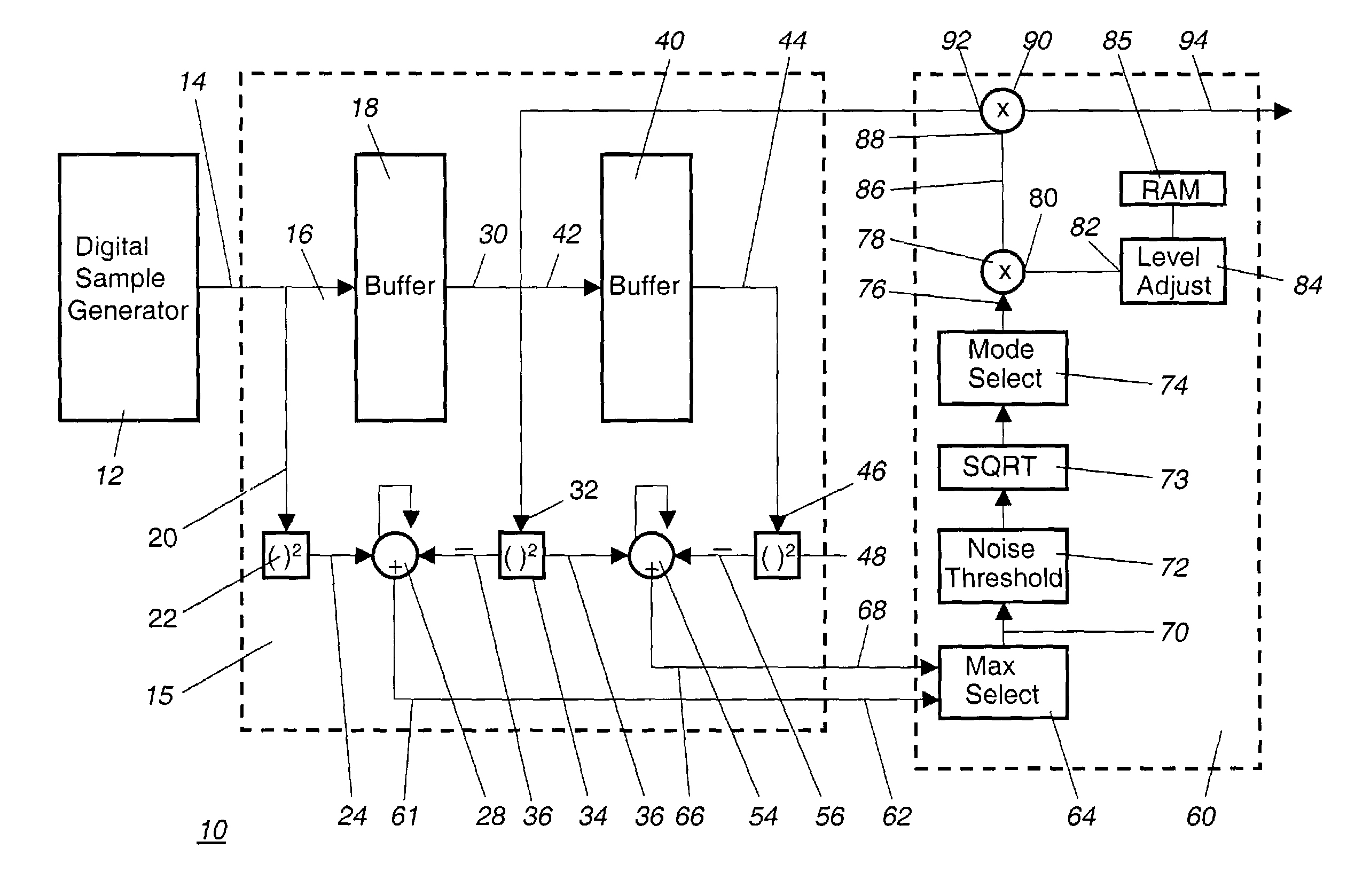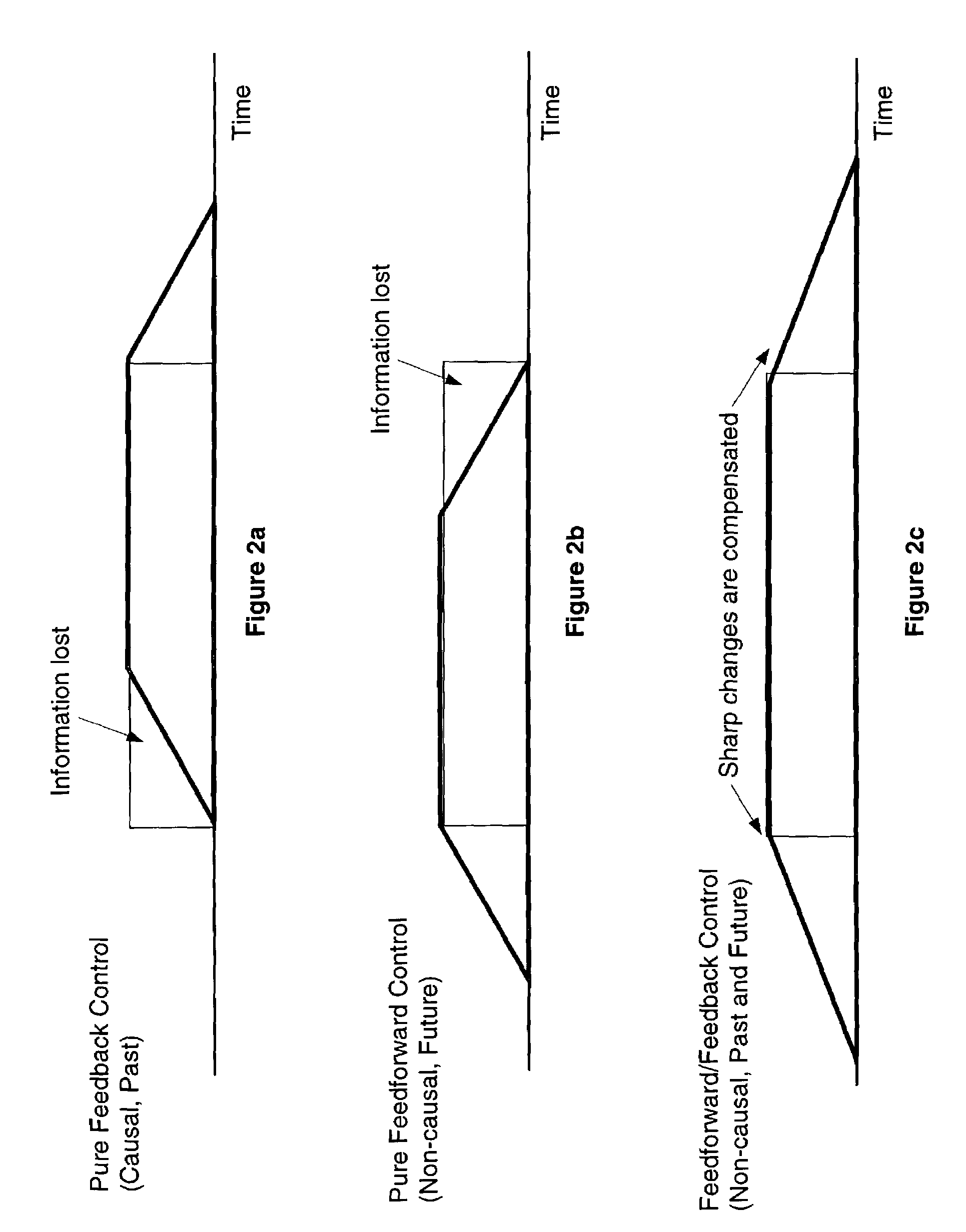Digital automatic level control system
a level control system and digital technology, applied in the direction of gain control, transmission monitoring, pulse technique, etc., can solve the problems of reducing pa efficiency, delay in reaction time of alc, and devices in satellites that cannot work efficiently with such signals, etc., to achieve a large time constant, slow power variation, and zero delay in reaction time
- Summary
- Abstract
- Description
- Claims
- Application Information
AI Technical Summary
Benefits of technology
Problems solved by technology
Method used
Image
Examples
first embodiment
[0016]The basic concepts of the present invention can first be understood on a single channel or single user basis. With reference to FIG. 1, the present invention is illustrated comprising a digital automatic level control (DALC) system 10. The DALC system 10 is designed for controlling the level or amplitude of any single channel signal that is either in the form of, or has been converted into, a sequence of digital time samples. In one preferred application, the DALC system 10 is employed to control the power level of a digital communications signal that is received by a satellite. It will of course be understood that the embodiments of the invention can be employed in any automatic signal level or gain control application.
[0017]In the embodiment illustrated in FIG. 1, an incoming signal is input to a digital sampling generator 12 that generates on an output 14, a sequence of digital time samples of the incoming signal. The digital sampling generator 12 is not an actual element o...
second embodiment
[0032]In conclusion, the present invention provides a digital automatic level control system that is particularly suited for detecting and leveling rapidly varying signals, such as bursty signals. The use of multiple delay elements enables the DALC system to estimate signal parameters both in the future and in the past in order to process a gain constant with which to level the signal parameter. Using the DALC system, leveling can be performed on a channel-by-channel basis, in addition to performing leveling on groups of sub-channels without requiring extra ALC modules.
PUM
 Login to View More
Login to View More Abstract
Description
Claims
Application Information
 Login to View More
Login to View More - R&D
- Intellectual Property
- Life Sciences
- Materials
- Tech Scout
- Unparalleled Data Quality
- Higher Quality Content
- 60% Fewer Hallucinations
Browse by: Latest US Patents, China's latest patents, Technical Efficacy Thesaurus, Application Domain, Technology Topic, Popular Technical Reports.
© 2025 PatSnap. All rights reserved.Legal|Privacy policy|Modern Slavery Act Transparency Statement|Sitemap|About US| Contact US: help@patsnap.com



